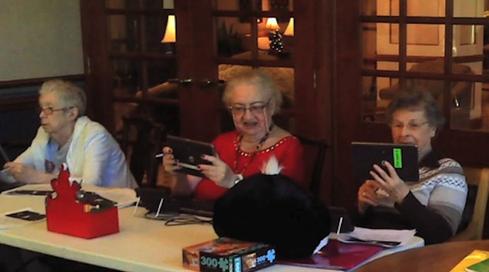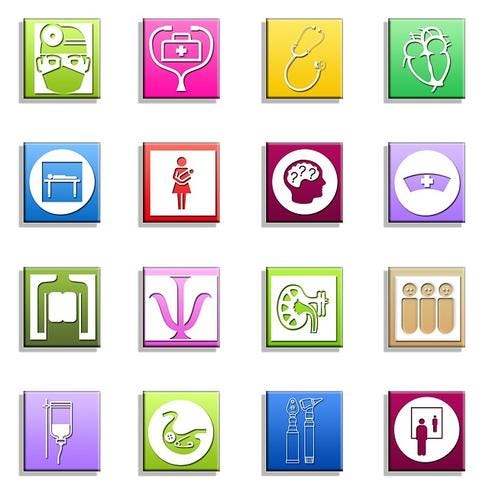Senior Living Community Goes WirelessSenior Living Community Goes Wireless
Brookdale Senior Living makes mobile technologies central to how it delivers medical and assisted living services to its residents.


15 Apps For Healthy Living
15 Apps For Healthy Living (Click image for larger view and slideshow.)
Brookdale Senior Living Solutions cut the cord across its assisted living and retirement communities, granting wireless access to residents, staff, and guests for everything from ordering meals and haircuts to monitoring physical therapy and electronic health records (EHRs).
The wireless network is about to grow significantly with an expansion of the company, which operates assisted living and retirement communities in housing and apartment buildings. The company acquired Emeritus in February for about $1.4 billion. Eventually, Brookdale will operate 112,700 units in 1,161 communities in 46 states, and it wants to make wireless services available to all of them.
Back in 2009, when Brookdale began framing its wireless and mobile strategy, the assisted living company wanted to prepare for the predicted onslaught of EHRs and mobile health professionals and technologies, said Chris Fadrowski, senior director of infrastructure at Brookdale.
"We wanted to make sure our people were mobile, and the apps we were looking at wouldn't tie people to a computer in a hallway somewhere. People who are mobile provide a much better level of care," he said. "We felt the accuracy needed to be there, and we needed to get info uploaded into our servers or into an app in the cloud. Doing it real-time makes it more accurate and much more timely."
[For more on how wireless is helping people with hearing loss, see iOS Brings Better Control To Hearing Aids.]
Wireless also allows Brookdale to adapt rooms for alternate uses -- quickly changing a dining room into a physical therapy gym, for example. That would be more difficult with facilities hardwired for a specific purpose.
Brookdale, which was already using wireless at its corporate offices, narrowed down its selection to five vendors. It eventually chose Aerohive Networks' controllerless infrastructure, because it delivered performance at significant cost savings, said Fadrowski.
"It saved us a significant amount up front and recurring costs. You don't have to do maintenance on all the controllers or the WACs [wireless access controllers] behind them. Based on our uptime demands, everything would have had to be redundant in all 500 locations; we'd be spending upwards of a couple of million dollars on controllers initially," he said. "With a controller-based infrastructure, if you lose the controller, everything behind it goes down. Controllers fail. WACs fail. We didn't want to buy two to get the redundancy."
Sreekanth Kannan, Aerohive's senior marketing manager, said most of Brookdale's deployment used 2.4-GHz wireless, which the company standardized on.
Having chosen the backbone, Fadrowski came up with a budget and located building plans for every single edifice Brookdale owns. By contracting with one cabling firm, Brookdale got a volume discount on the miles of Cat5e cable it required, it and developed a strong relationship with its cabling partner, he said. This was vital, since cablers worked in Brookdale clients' homes.
"I created a couple-page document of standards of what has to be done when we go to a Brookdale community, taking into account noise -- this is somebody's home -- and dress code," he said.
Working with a local value-added reseller, Brookdale's IT team learned how to install and use Aerohive's products, and it oversaw the rollout of about 7,500 access points from its Milwaukee headquarters.
"We started to build a very standardized approach and were doing about 30 installations a month," Fadrowski said.
Brookdale wanted to do more than simply offer residents free wireless access, however. The company uses a growing array of tools to improve the quality of residents' lives and health, he said. ConnectedLiving is a Facebook-like social media site where residents and families can keep in touch. Residents pay for meals or haircuts with room keys via a wireless point-of-sale system, and the Provider Portal connects patients to doctors.
"We have two therapy apps we use that are all wireless on Droids. We have another [EHR system] that we're looking at right now that is wireless," said Fadrowski. "We're really saying wireless is how we're going to connect all our people at all times. We're not held back anymore by wire. It's almost become an assumption that we are going to buy or create an app that has full use for any wireless device."
Brookdale creates separate virtual LANs for each community and keeps groups -- such as guests and vendors -- segregated on the network. The cloud-based security service OpenDNS cleans up wireless guest traffic, and end users are responsible for their own support.
"Performance is a challenge, especially as we start to put more and more applications out there," Fadrowski said. "We size our broadband networks based on the number of users, end devices. So at some communities, we might have two or three broadband lines, and at a smaller community, we might have one broadband line, and we might do fine. At larger communities, we've had to scale that up."
Even some of the most elderly residents have quickly embraced these new capabilities, Fadrowski said. Often they use a tablet or smartphone they received as a gift to connect with family members. As tech-savvy Baby Boomers age, the next generation of residents will expect mobile and wireless-enabled solutions, he said.
"Wireless is going to become the de facto standard," Fadrowski says. "It's the way it seems to be going. It makes my life easier, and it keeps our costs down."
Download Healthcare IT In The Obamacare Era, the information Healthcare digital issue on changes driven by regulation. Modern technology created the opportunity to restructure the healthcare industry around accountable care organizations, but ACOs also put new demands on IT.
About the Author
You May Also Like






